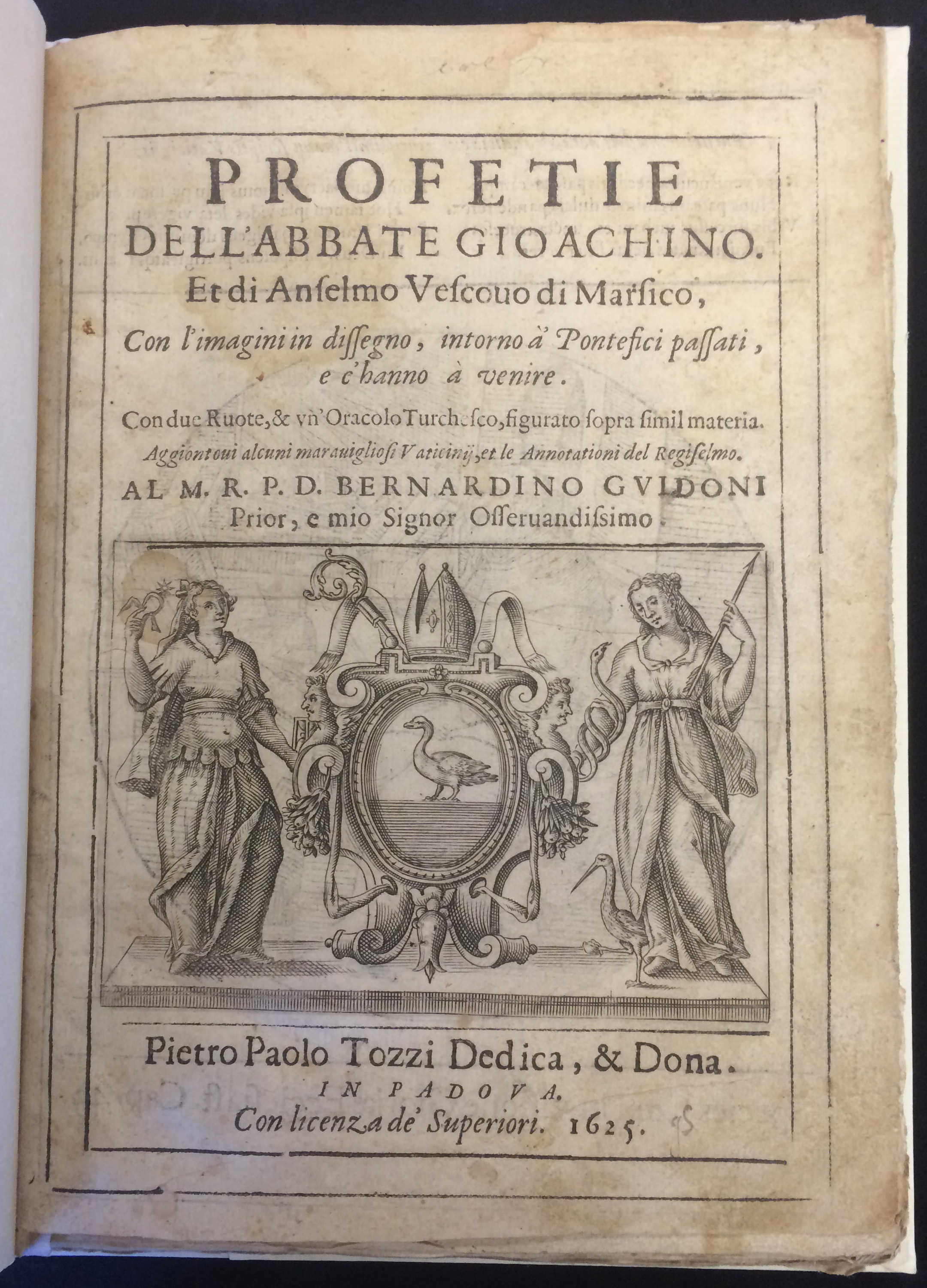On April 16 my colleague Evyn Kropf and I prepared a show & tell presentation of manuscripts and early printed books for the attendees of the symposium, "Speaking the End Times: Prophecy and Messianism in Early Modern Eurasia". In brief, this two-day conference explored the topic of early modern apocalypticism from India to Iberia. Our presentation showcased a wide range of material on several aspects of the theme of the symposium, starting with a selection from the Islamic manuscript collection and ending with western material under my purview.
For instance, the Special Collections Library holds early editions of works by the Dominican friar Girolamo Savonarola. In the last decade of the fifteenth century, Savonarola preached in the church of San Marco in Florence. Essentially, he publicly raised his concern on what he saw as a corrupted Church, delivering a series of apocalyptic prophecies that, he claimed, God had communicated to him. Eventually, Savonarola’s message gained credibility when Charles VIII of France invaded the Italian peninsula in 1494. However, by 1498 Savonarola's severe moral criticism had exhausted the patience of the Church and civil authorities: he was tortured and burnt at the stake in the Piazza della Signoria, Florence. In his prison cell, while waiting for his execution, he composed a series of commentaries on some of the Psalms. Special Collections holds this extraordinary 1499 edition containing the following two works: Savonarola's commentaries on Psalm 51, with each line from the psalm, in Latin, being followed by an Italian commentary; and a passionate prayer reinforcing the main foundations of the Catholic faith as uttered by Savonarola himself before the sacrament of Communion (audita lamessa quando era preparato alla communione) on 23 May 1498, the same day of his death. And as shown in this first page, the publisher made sure that the reader knew about the extraordinary circumstances under which the book was originally composed:
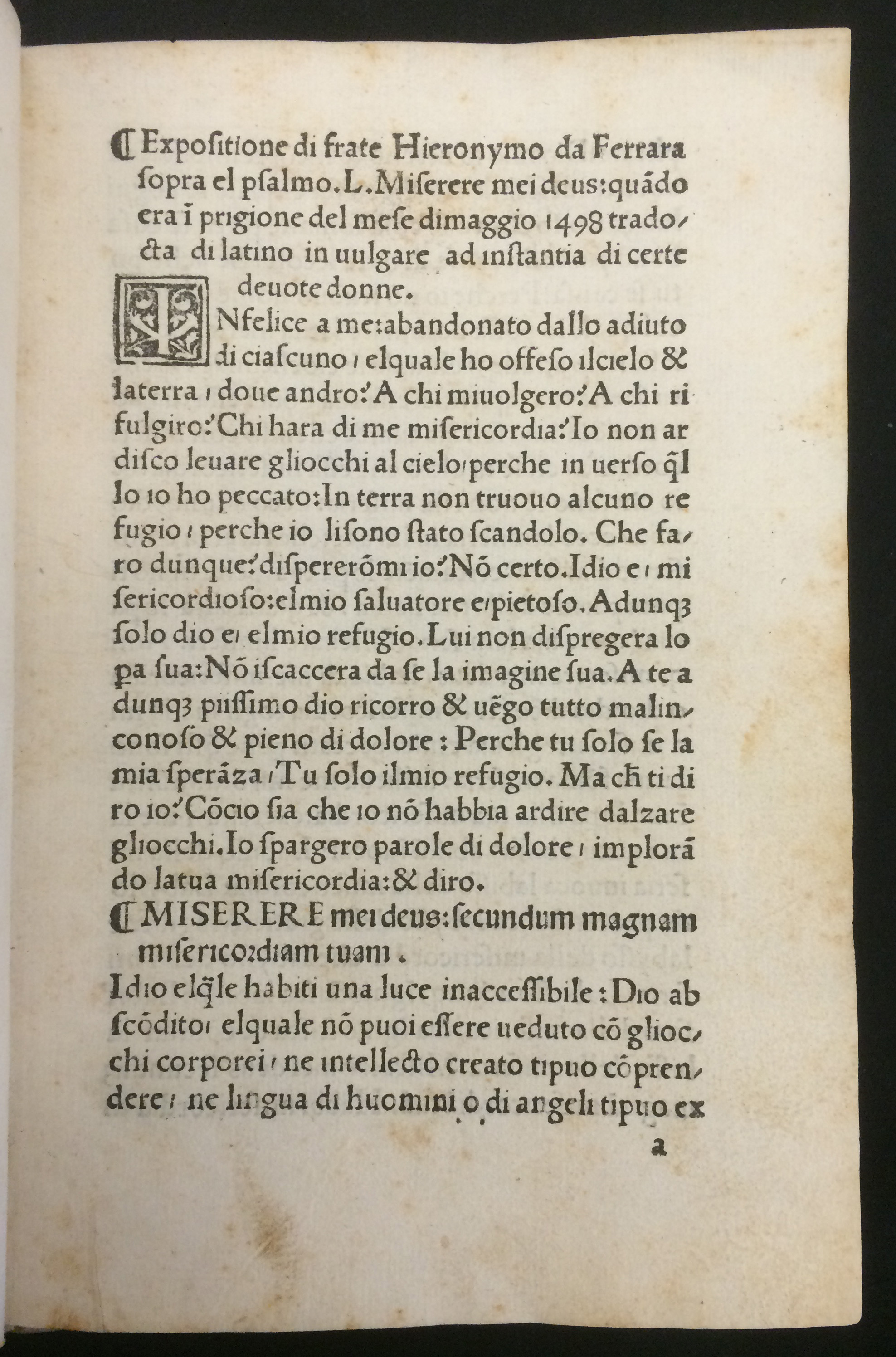
Expositio in Psalmum L (51) "Miserere mei Deus" [Italian]; Orazione fatta il 23 maggio 1498 innanzi al Santissimo Sacramento. [Italian] [Florence: Bartolommeo di Libri], 1499
Quando era in prigione del mese dimaggio 1498 tradocta di latino in vulgare ad instantia di certe devote donne.
When he was in prison in May 1498, translated from Latin into the vernacular at the request of some devoted women.
The twelfth-century Cistercian Abbot Joachim of Fiore wrote about a new conception of history based on an analogy with the Holy Trinity: the days of the Old Testament were identified with he Age of the Father; the coming of Christ began the Age of the Son; and, after Joachim's own time, an Age of Spiritualism would arrive, in which the earth would be governed by monks. The fact that this prediction never materialized did not trouble future theologians, and charlatans, who would embrace Joachim's ideas for various reasons. In the sixteenth century, for example, protestant reformers turned Joachim's prophecy of a third age into "millenarianism," in other words, a belief that the Second Coming of Christ would be followed by a thousand-year rule of the saints as predicted in the Bible. Here is a copy of a seventeenth-edition of Joachim's prophecies, followed by those composed by Anselmo Bishop of Marsico in the thirteenth century. Clearly, a printed testimony of how medieval apocalypticism could be revisited and perhaps interpreted in new ways in early modern Europe.
Joachim of Fiore. Profetie dell'Abbate Gioachino, et di Anselmo vescovo di Marsico, : con l'imagini in dissegno, intorno a'Pontefici passati, e c'hanno a venire. Con due ruote & un oracolo turchesco, figurato sopra simil materia. / Aggiontoui alcuni marauigliosi vaticinii, et Annotationi del Regiselmo. Al M.R.P.D. Bernardino Gvldoni prior, e mio Signor Osseruandissimo. Padova : Pietro Paolo Tozzi dedica, & dona, 1625
And I also showed some examples of a genre that became very popular in Europe during the early years of the reformation: prognostication or practica. In brief, these are terms employed for predictions based on astrology, usually for a single year. They were printed either in single-sheet broadsides or in quarto-format pamphlets (gatherings of one or more sheets folded twice, containing four leaves per sheet). Here below are three examples of this sort of pamphlets. Being ephemeral by their scope and material design, and in many ways resembling our newspapers, copies like the ones shown in this blog post are extremely rare.
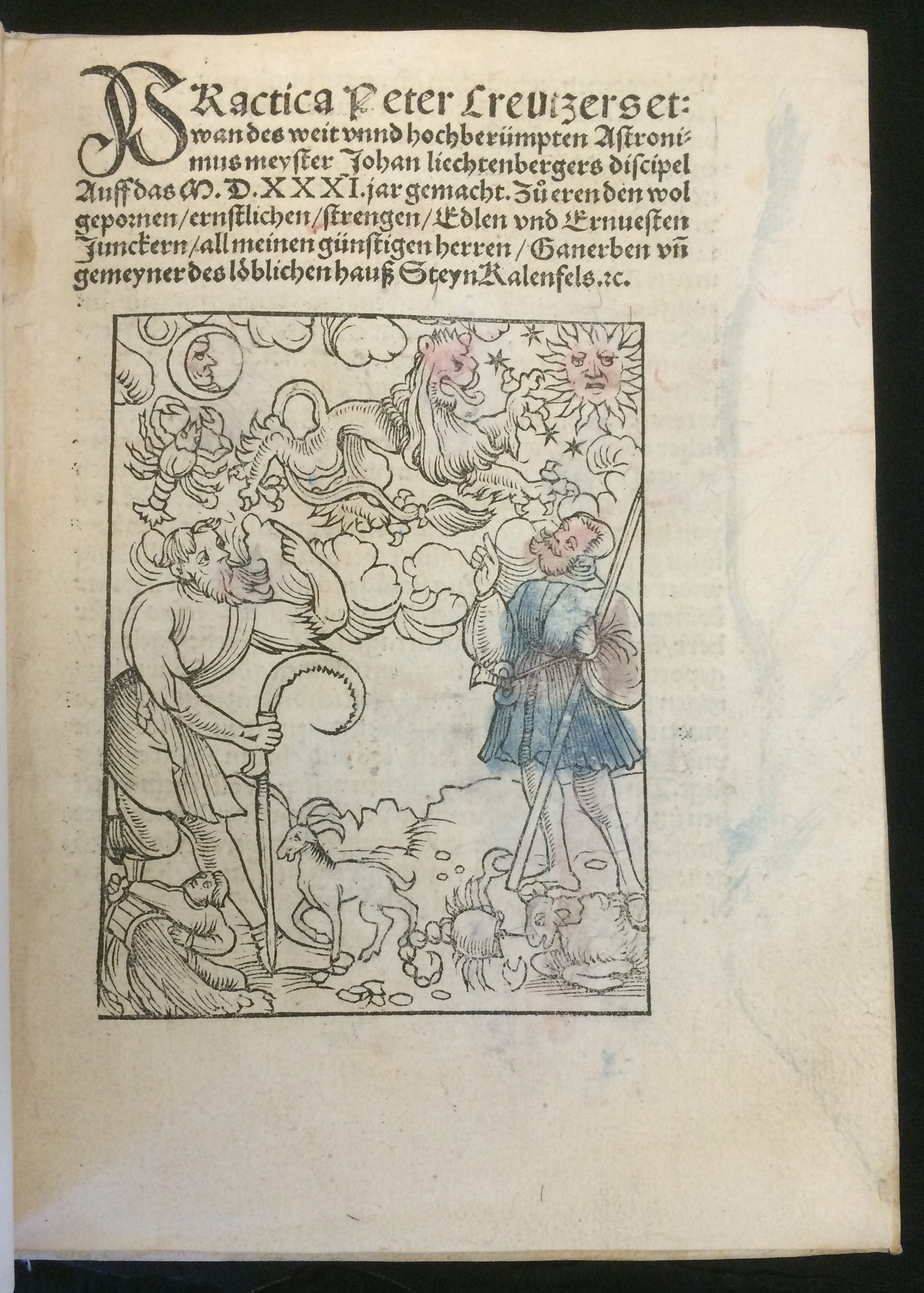
Peter Creutzers. Practica Peter Creutzers ... auff das M.D. XXXI. Jar gemacht ... [1530]
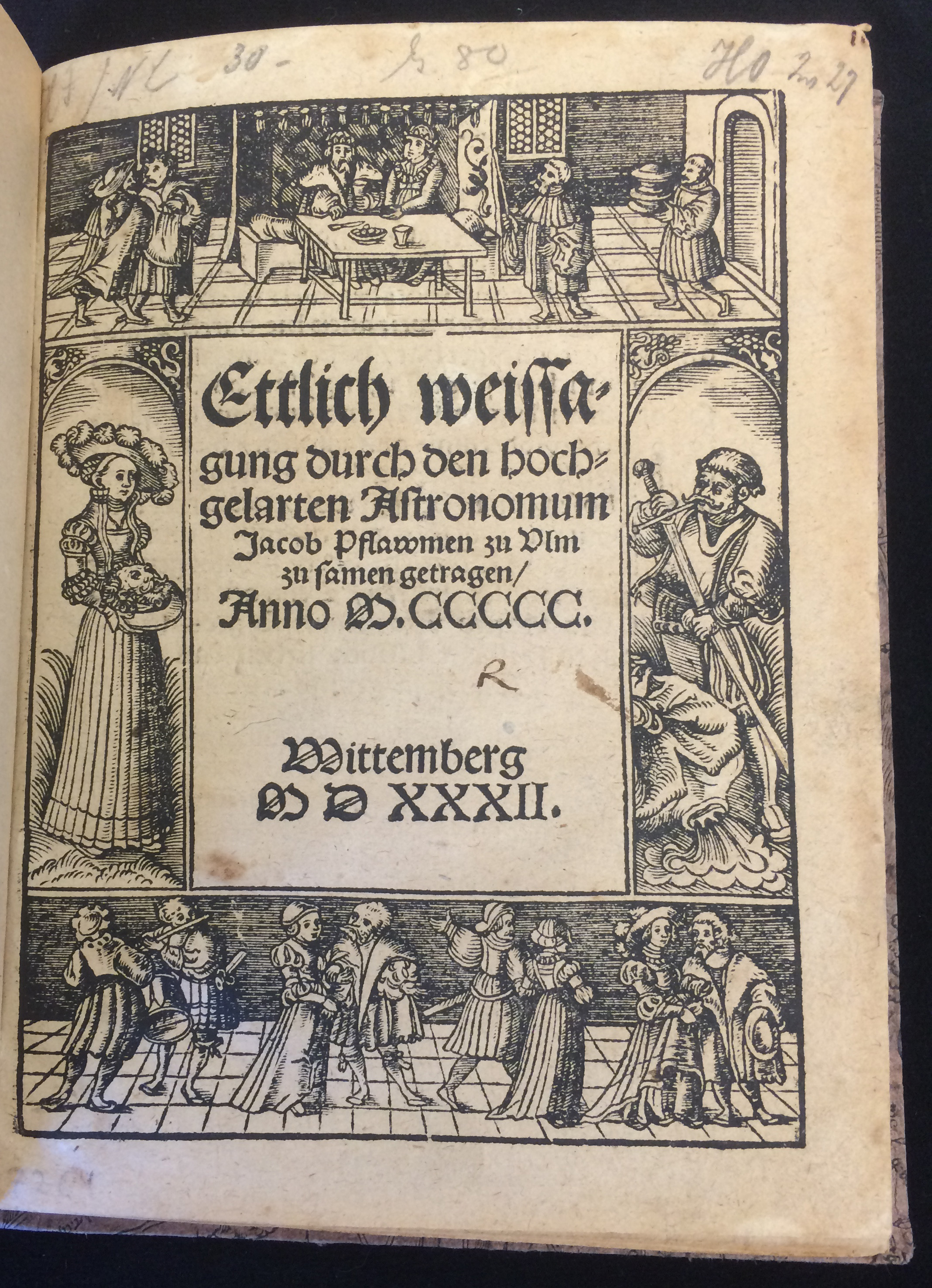
Jacob Pflaumen. Ettlich Weissagung durch den hochgelarten Astronum Jacob Pflawmen zu Vlm zu samen getragen, anno M.CCCCC. Wittemberg, 1532
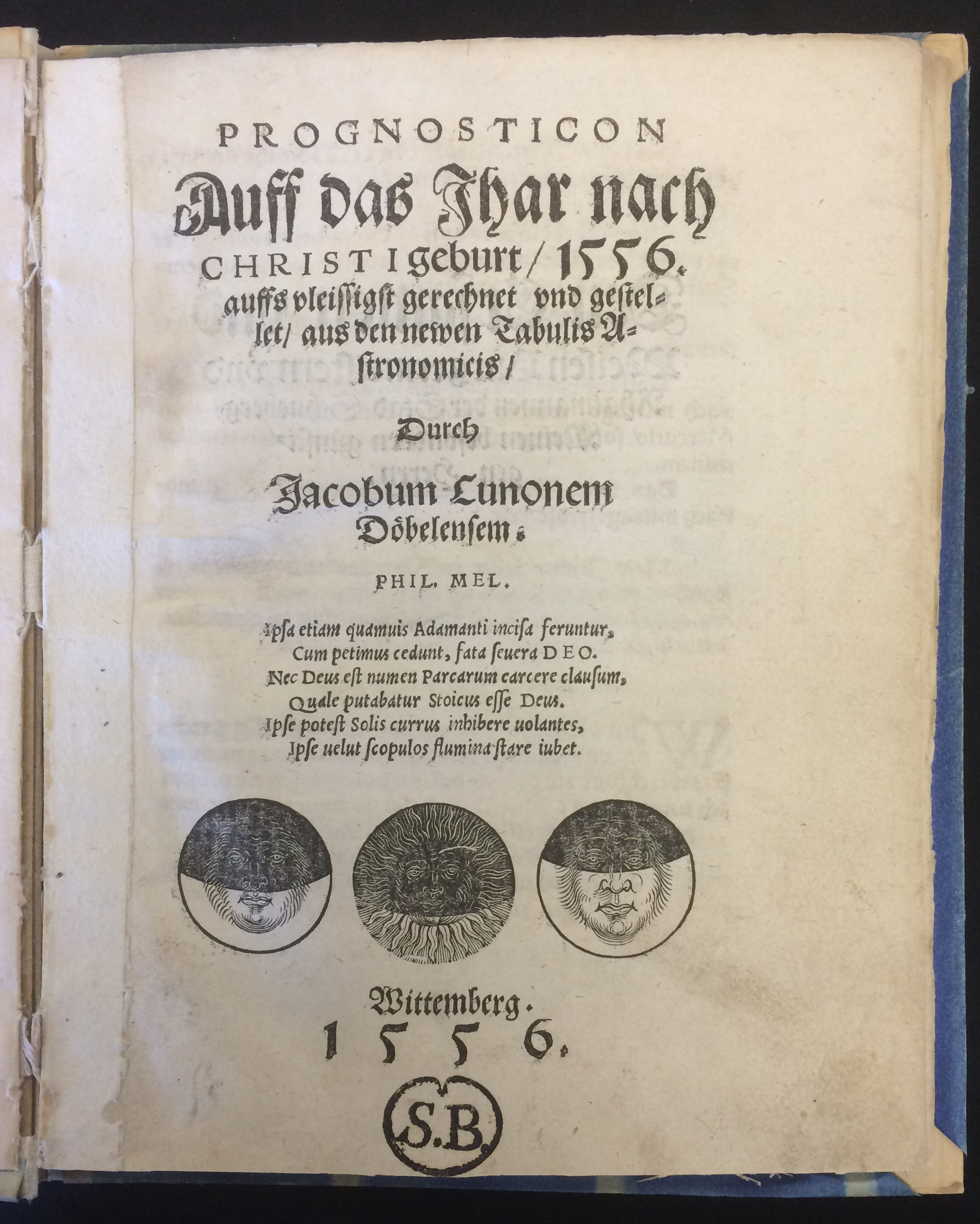
Jacobus Cuno. Prognosticon auff das Jhar nach Christi Geburt, 1556. auffs vleissigst gerechnet vnd gestellet, aus den newen Tabulis Astronomicis, durch Jacobum Cunonem Döbelensem. Wittemberg, 1556
